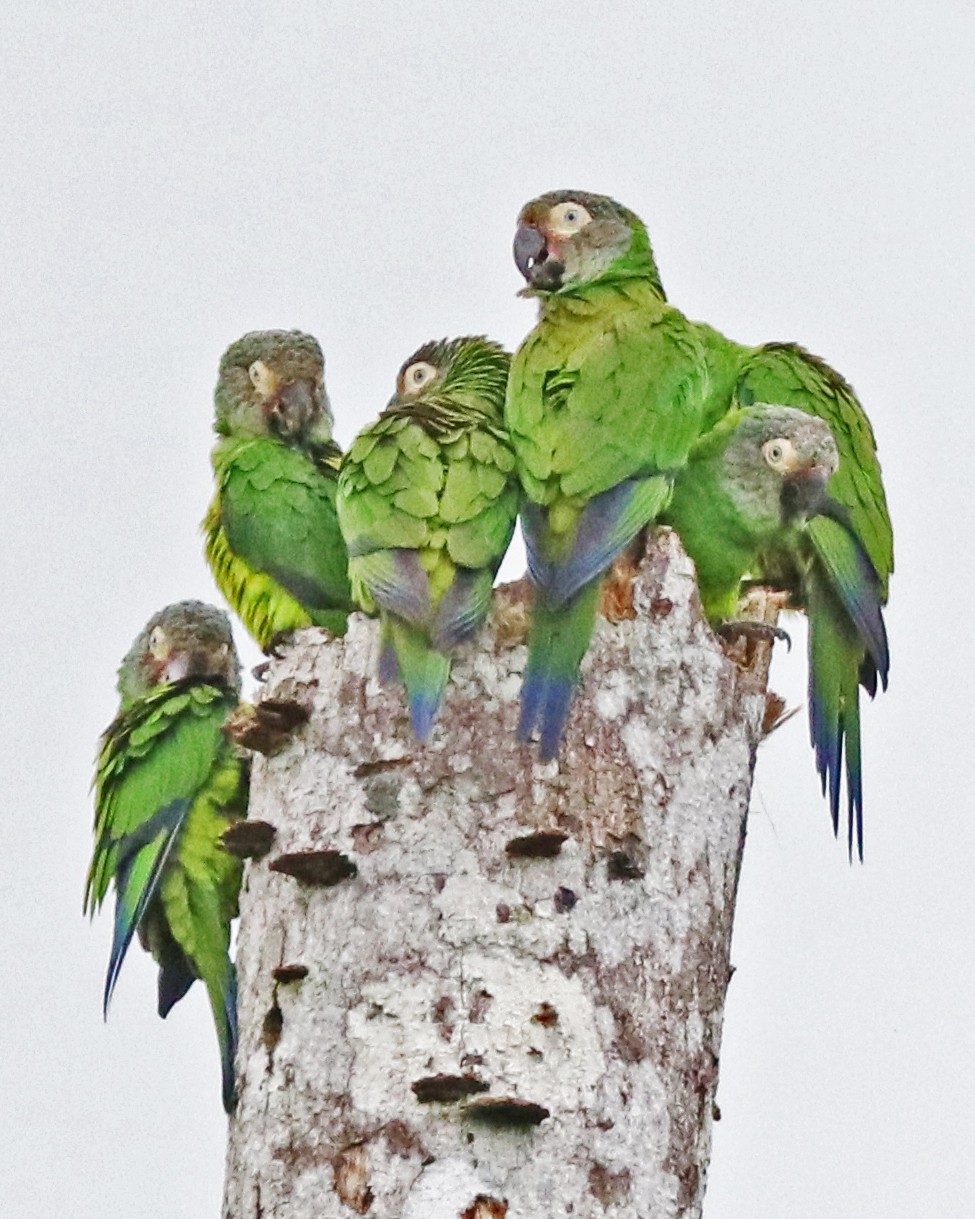Dusky-headed Parakeet
A species of Black-billed Aratingas Scientific name : Aratinga weddellii Genus : Black-billed Aratingas
Dusky-headed Parakeet, A species of Black-billed Aratingas
Botanical name: Aratinga weddellii
Genus: Black-billed Aratingas
Content
Description General Info
 Photo By Joseph C Boone , used under CC-BY-SA-4.0 /Cropped and compressed from original
Photo By Joseph C Boone , used under CC-BY-SA-4.0 /Cropped and compressed from original Description
The dusky-headed parakeet (Aratinga weddellii), also known as Weddell's conure or dusky-headed conure in aviculture, is a small green Neotropical parrot with dusty grey head found in wooded habitats in the western Amazon basin of South America. Its range extends from southeastern Colombia south through eastern Ecuador, eastern Peru and southwest Amazonian Brazil, to central Bolivia. It prefers semiopen habitats such as várzea, forest edge, and forest remnants, but can also be found in coffee plantations. It is generally common and its habitat preference makes it less vulnerable than many other Amazonian species. Consequently, it is considered to be of least concern by BirdLife International and IUCN. This long-tailed species is generally green in color (both lutino and blue mutations are rare, but do exist in captivity) with a gray-brown head, a blue-tipped tail, and remiges that are dark gray from below, mainly blue from above. The bill is black, and it has a broad, bare, white (sometimes yellow-tinged) eye-ring. With a typical length of 25–28 cm (10–11 in) and a weight around 100 grams, it is slightly smaller than the sun conure. Many people call these conures minimacaws because they have skin near their beak and eyes, similar to the macaw. It is social, and usually found in pairs or small groups. It may even flock with different species of conures. When food is plentiful, it may form flocks of up to 100 members. It eats fruit, seeds, and flowers, and searches decaying wood for insect larvae. It also ingests mineral-rich soil, e.g., from a clay lick, as a supplement. A pair raises their offspring together, nesting in woodpecker holes in trees or arboreal termite nests. Consuming clay is believed to provide a mineral supplement and neutralise toxins in their diet. Their predators (along with many other neotropical parrots) include many birds of prey, monkeys, and in some cases, jaguars. They do well in captivity. They are fairly easy to breed if provided with a durable nest box, and will lay up to three clutches per year. They are known to be quiet, compared to other conure species, but still very energetic and clownish, like most conures. These conures' lifespans range from 25 to 50 years, though their typical lifespans are usually 35–40 years. Recently, they have been sighted as a colony in coastal districts of Lima, Perú. They probably came as pets, and have settled in this city. 
Size
28 cm (11 in)
Nest Placement
Cavity
Feeding Habits
Dusky-headed Parakeet primarily feeds on a variety of palm fruits, including those of Goupia glabra and Inga edulis, as well as Mimosa fruits and inflorescences of Erythrina and Dioclea glabra. Their foraging behavior focuses on these specific plant materials, showcasing dietary preferences unique to their species.
Habitat
Dusky-headed Parakeet typically inhabits wooded areas within the western Amazon Basin, thriving particularly in seasonally flooded várzea forests and lush riparian zones. This species is also accustomed to tall swampy secondary growths, scrublands, and various clearings while steering clear of higher-elevation terra firme forests. Additionally, dusky-headed Parakeet can be found in human-altered landscapes such as cane and coffee plantations, extending up to elevations of 750 meters above sea level.
Nest Behavior
The female dusky-headed Parakeet incubates 2-6 white eggs for 21-23 days. Both parents participate in rearing the young, but details on timing and care specifics are limited.
Nest Characteristics
Dusky-headed Parakeet's nests are often located in trees or arboreal termite nests, without use of added materials. They are simple in structure and cater to the species' nesting needs.
Dite type
Herbivorous
General Info
Feeding Habits
Bird food type
Species Status
Not globally threatened.
Scientific Classification
Phylum
Chordates Class
Birds Order
Parrots Family
Parrots Genus
Black-billed Aratingas Species
Dusky-headed Parakeet